Take a Historical Tour Through Biloxi at Night
Posted by Paige Gutierrez on May 17th 2023
This article originally written by Paige Gutierrez with the title "Biloxi at Night". Paige is a local Biloxi writer for BNews Monthly, the monthly newsletter of the City of Biloxi. Photographs courtesy of the LHG Image Collection / Local History & Genealogy Department / Harrison County Library System unless otherwise specified.
Here is a selection of photos of illuminated night scenes over the years in Biloxi, plus a look-back at when the nighttime lights were darkened with “dim-outs” during World War II.
The seawall (pictured above) was an inviting place to sit near the water on a moonlit evening, with the Biloxi lighthouse in the background. Photo was taken before the existence of the artificial sand beach that was completed in the early 1950s. The seawall dates to the late 1920s.
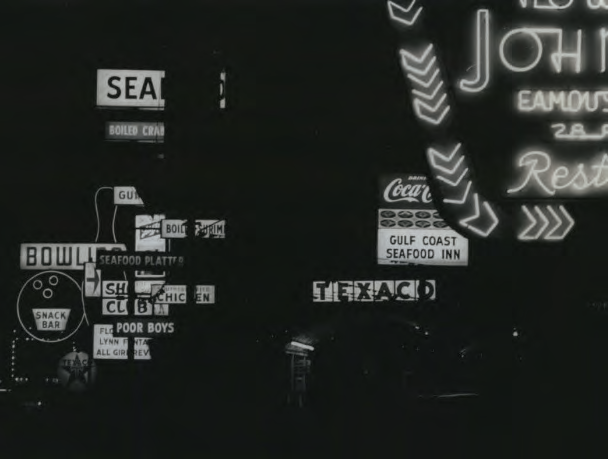
Signs light the night on Biloxi's Highway 90 in 1967. This picture was taken by The Times Picayune photographer G. E. Arnold, when the New Orleans newspaper included in the Mississippi Gulf Coast in its coverage area.
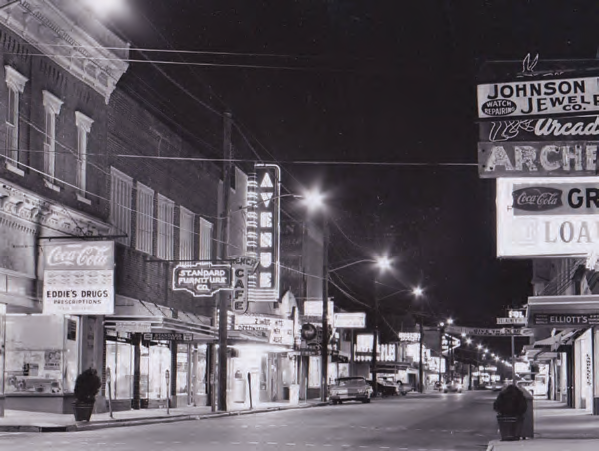
Howard Avenue, after dark, in downtown Biloxi, 1967. Photo by G.E. Arnold, The Times Picayune.
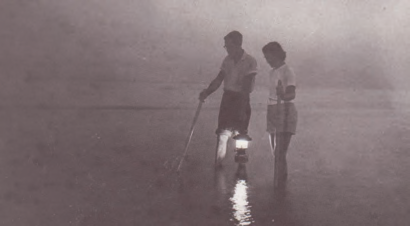
Couple with lantern and gig hoping to spot and spear a flounder. Their light was likely one of many small lights moving along the shore, carried by people looking for flounders and soft-shell crabs during spring and summer evenings. Photo from Joe Scholtes collection.
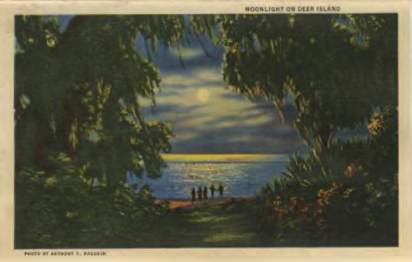
Looking seaward from Deer Island, with the moon as the only light we see.
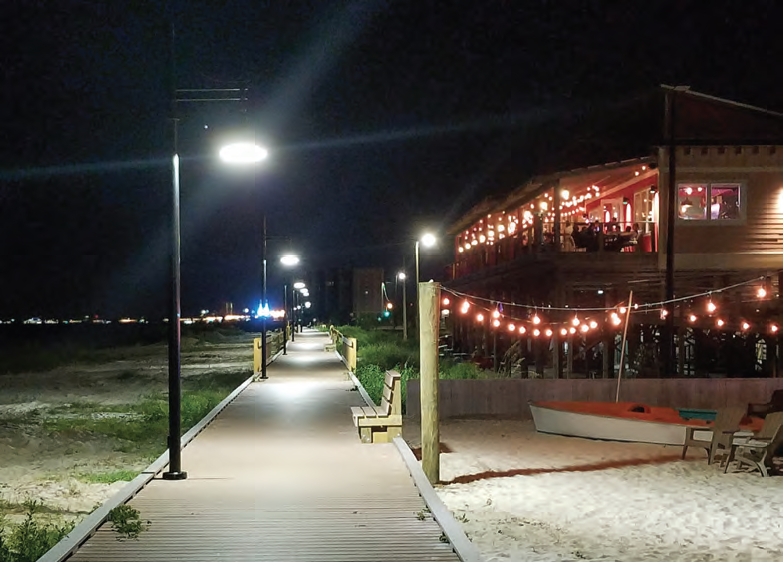
The West Biloxi Boardwalk at night, where today’s businesses take advantage of the beachfront access and waterfront view.
When Nights Were Darkest
Wartime Brought New Rules for Coast
By the summer of 1942, German U-boats were sinking vessels in shipping lanes to New Orleans. The submarines hid in murky Gulf waters near the Mississippi River during the day and hunted their prey at night. Lights from coastal towns made their targets easier to see, so dim-out rules were put into effect, including for the Mississippi Coast, by the War Department. The Daily Herald listed dim-out requirements:
“Prohibited lighting includes: Illuminated signs, neon or other; flood lights on top of or otherwise
illuminating buildings or monuments; bright illumination at athletic contests and other such places of amusement; exterior lighting, except street lights, within 500 yards of coast line; bonfires and all other forms of lighting on beaches, including torches commonly used for floundering and soft-shelling. The provisions relative to controlled lighting on motor vehicles provide that only dimmed headlights are permitted for a radius of 500 yards parallel to the shoreline, while only parking lights are permitted when cars are moving or facing the coastline.”
Military and local civic leaders campaigned for compliance, assisted local law enforcement, and sought to educate the public on the rules. Most people complied, but some did not.
On July 21, 1942, a front-page article in The Daily Herald under the headline “Dim-out arrests to begin tonight,” reported that one hundred military police officers had been sent from Camp Shelby to help local police enforce dim-out regulations in the coast counties. Subsequent news items reported crowded court dockets, names of offenders, and repeated pleas by military and civilian leadership for cooperation.
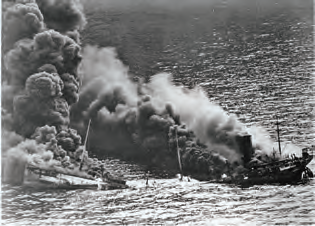
Torpedoed oil tanker sinking in the Gulf of Mexico, 1942. Photo from the National Archives.
“It should be deemed a privilege to dim-out”
The Daily Herald printed a front-page editorial on July 24, 1942, under the headline “It should be deemed a privilege to dim- out.” The writer lamented the need for diverting Army personnel from other duties to enforce dim-out rules, noted the need to safeguard offshore shipping, and argued that the dim-out order was indeed urgent and necessary. The editorial closed as follows:
“As civilians, are we not interested enough in this war—OUR WAR—to conform with regulations set out by the military? Are we not concerned enough of our way of living, of our freedom of speech, freedom of worship, and all the other blessings bestowed upon our nation, to be willing and anxious to contribute in any way possible to a victory for the United Nations? What is our answer? It should be wholehearted cooperation in observing dim-out regulations and any other emergency war requirements which may be ordered in the future.”
Praise for Biloxi
Even lights farther from the actual shoreline, such as those of downtown Howard Avenue in Biloxi, contributed to “sky glow.” On August 12, 1942, The Daily Herald reported that the coast’s chief military enforcement official “commended Biloxi city officials for the extinguishing of 66 percent of the white way lights along Howard Avenue. He said this reduced considerably the sky glow over the area.” The official “characterized the reduction of the lighting intensity as being the most valuable single contribution to the enforcement cause during the present campaign.”
###
Hungry for shrimp? Visit our Shop page to order wild-caught Gulf shrimp to be shipped to anywhere in the country today!

